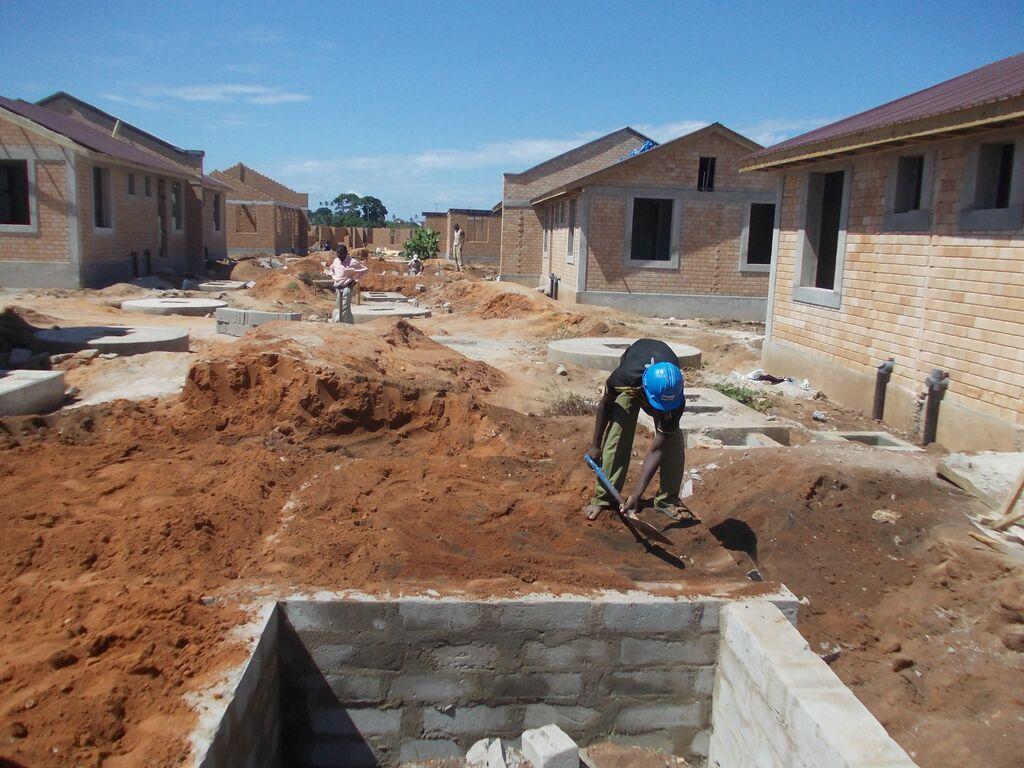Building an affordable Green residential complex in Tanzania
March 15, 2022

Dar es Salaam—a city whose name translates to “house of peace”—is the largest urban area in Tanzania and is reportedly the second-fastest growing city in the world. It is home to 6 million citizens, most of whom have immigrated from rural areas in the country, with the population projected to double by 2030. However, 80 per cent of its residents live in unplanned and unserviced areas, and the lack of infrastructural organisation means that problems such as poverty, congestion and sprawl are compounding within the city.
Under these conditions, it is of paramount importance to build an inclusive, self-sustaining and healthy environment as a benchmark for resilient communities in Dar es Salaam. Kigamboni Housing Estate is an affordable housing project with the aim to eradicate poor living conditions and improve the quality of life for 200 families.
This project was developed by the National Housing Corporation, directly under the Ministry of Lands, Housing and Human Settlements in Tanzania, and it is the first to be awarded the Green Mark certification by Singapore’s Building and Construction Authority (BCA).
PASSIVE COOLING

The way spaces are cooled would make a massive difference in energy consumption, considering how the site temperatures could go up to 40 degrees Celsius in Dar es Salaam’s tropical climate. To achieve thermal comfort through passive strategies, the design encouraged natural air flow whilst reducing thermal heat gain.
The rows of housing in the master plan were oriented to encourage natural air flow. Doors and windows faced the predominant direction for wind, which enhanced natural cross-ventilation into the houses. Meanwhile, openings were minimised on the east and west façades, thus reducing exposure to the sun’s glare. Shading features were also placed in the front of the house to prevent heat gain.
External floors and pitched roofs were installed with good solar reflectivity (SR) finishes, which helped reduce the heat-island effect and lower the external built-up temperature. The tinted windows contained a thermal conductivity element, UPVC (unplasticized polyvinyl chloride), which can filter out uncomfortable glare while allowing in an abundance of sunlight.1 Computational Fluid Dynamics (CFD) simulations have been conducted to assess the natural ventilation in the houses, which verified that the design was good for thermal comfort.2
LANDSCAPING

To improve the quality of the natural environment on site, the urban landscape was restored with native landscaping. Drought tolerant plants that were able to withstand low quantities of water and hot temperatures were planted on site, providing visual and aesthetic comfort to the neighbourhood.
Since many Tanzanians rely on agriculture for their livelihood, the project incorporated garden plots where people can grow their own crops.3 These spacious gardens can be accessed from the back of each house, adjacent to where the open-air kitchens are located. This placement of the kitchens helps to lower indoor ambient temperatures and maintain a good air quality inside the houses.
GREEN MATERIALS BY AND FOR LOCALS


The estate aimed to empower residents and local manpower to ensure that sustainability efforts could be maintained in the long term, as well as develop diversified skills in the workforce. A training centre was established on-site to train people in plumbing, carpentry and wall construction.
Ninety per cent of materials have been sourced from within Tanzania, minimising carbon footprint from transportation. A major component of the complex, the house walls, were constructed out of hydro-foam, which is made by compressing local stabilised soil. This required only 12 per cent water compared to conventional methods.
Not only are they highly durable, the interlocking soil blocks were able to minimise construction waste, as any leftover compacted soil could easily be reused to make new walls. It also reduced the amount of heat stored within the walls, providing a good U-Value (sum of thermal resistance) of 1.3W/m2K. Due to concrete and cement only being used for the ground slab, the project was able to achieve a low Concrete Usage Index (CUI) of 0.15m3/m2.
To reduce water consumption for each household, dual flush sanitary fittings were used within dwelling units. A community rainwater harvesting facility was also built on-site, encouraging neighbours to bond over an activity and improving their water self-sufficiency.
SUSTAINABILITY IMPACT
Through the passive design measures and Green materials, this complex had a carbon impact of 152 tonnes CO2e—a significantly low number when considering that the construction of a single house is estimated to generate 50 tonnes of CO2e on average.
“Sustainability is not only limited to those who have the money, nor does it require elaborate technology,” shared the lead Environmental Sustainability Design (ESD) consultant as one of their key learnings from this project. What is needed, however, is “education and training to facilitate and drive energy efficiency efforts.” This is the messaging that needs to be articulated as clearly as possible to end users, and the most effective way is by practicing actions that translate to benefits for the greater good.
Project information supplied by GreenA Consultants as the lead ESD Consultant
For more stories on the topic of sustainable housing, stay tuned for FuturArc 1Q 2022, which will be coming out very soon this March!
1 Source: Eco-Business. https://www.eco-business.com/news/singapore-green-mark-africa-dar-salaam/
2 https://www.construction21.org/city/h/kigamboni-housing-estate-dar-es-salaam.html
3 Source: Construction 21. https://www.construction21.org/city/h/kigamboni-housing-estate-dar-es-salaam.html
RELATED STORY: Carbon goals for the built environment

RELATED PROJECT: Singapore Zero Energy Cases

To read the complete article, get your hardcopy at our online shop/newsstands/major bookstores; subscribe to FuturArc or download the FuturArc App to read the issues.
Previously Published Commentary, Online Exclusive Feature
Contact us at https://www.futurarc.com/contact-us for older commentaries.
